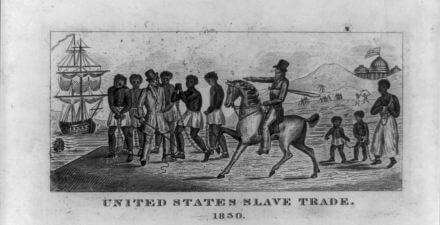Examining the history of the U.S. racial wealth divide shows stagnating progress on closing these disparities

A central part of Black History Month is highlighting the accomplishments and contributions of Black Americans to U.S. society, culture, and the economy, often in the face of incredible barriers. Over the course of U.S. history, the institution of slavery, overt and violent racism and discrimination, and de facto and de jure segregation actively separated Black people from resources that could help them thrive. Yet despite these barriers, Black Americans overcame them to develop art, create inventions, and change laws—all while propping up the economy that made the United States into the country that it is today.
All aspects of Black history are important to study and learn from, but examining the economic history of Black people in the United States is especially necessary to understand modern-day racial disparities in income and wealth and the consequences for economic growth, as well as the possibility of future shared prosperity. While Black Americans have experienced important gains in education, employment, and income, that progress often lags behind that of White Americans and broader national trends. And other indicators, such as Black homeownership rates, have registered little progress.
The racial wealth gap, in short, is one of the largest and most significant economic disparities in the United States today.
Wealth is built over time and can be passed down across generations—both in terms of the assets themselves and the benefits wealth can provide. Indeed, research finds that the wealth of one’s parents and grandparents can affect a person’s financial well-being and chances for economic opportunity. Yet to date, little research has been able to follow the long historical arc of wealth accumulation for Black people, which is especially important to consider, given past practices such as redlining that constrained wealth building in ways that are still felt today.
A new working paper seeks to provide more historical insight into the U.S. racial wealth divide. In a first-of-its-kind paper, Princeton University’s Ellora Derenoncourt and her co-authors, the University of Bonn’s Chi Hyun Kim, Moritz Kuhn, and Moritz Schularick, study changes in the racial wealth gap since the end of slavery in the United States. While there have been several studies that look at land-holding and wealth accumulation in specific U.S. states in the late 1800s and early 1900s, this paper is the first to provide historical data that compare Black and White wealth at a national scale.
The four co-authors model cash savings rates and capital gains for Black and White Americans to determine how these factors shape racial differences in wealth over time. One of the paper’s key insights is that while the U.S. racial wealth divide declined dramatically in the immediate decades following the end of the Civil War in 1865, that pace of decline then stagnated for much of the 20th century—and even increased beginning in the 1980s. (See Figure 1.)
Figure 1

The authors find that after the Civil War, during the period of Reconstruction and even in its aftermath in the late 19th century and early 20th century, the White-to-Black per capita racial wealth gap fell from 60-to-1 in the mid-1860s to 10-to-1 by 1920. The initial drop following the end of the Civil War was driven in large part by the substantial relative increase in asset ownership by formerly enslaved Americans, who previously owned little to nothing.
In the decades following, Black people began to secure steady jobs, start businesses, and own land, all of which contributed to the decline in the racial wealth gap as well. Even with the substantial headwinds of the rise of Jim Crow and de jure segregation in early 20th century—as well as the eventual onset of the Great Depression in the 1930s—the racial wealth gap still generally continued to fall.
In the post-World War II era, as the U.S. economy expanded rapidly and the U.S. middle class grew alongside it, wealth accumulation for Black and White families progressed at similar rates. But that move to parallel progress in the mid-20th century also marked the beginning of a long period of slowing, and eventual stagnation, in the convergence of the wealth gap between White and Black Americans, only going from around 8-to-1 in 1940 to around 6-to-1 by 2020—a noticeably smaller drop than over the 80 years before 1940 that the paper examines.
The bulk of contemporary studies of the wealth of Black and White families generally start their analyses in the 1960s, due to the availability of these data. Yet the longer timeframe in this new paper shows that most of the progress in closing the U.S. racial wealth divide actually preceded the 1960s.
Additionally, Derenoncourt and her co-authors spot a disheartening trend starting in the 1980s: Within the past few decades, not only did the historical convergence between rates of Black-owned wealth and White-owned wealth slow and stop, but the White-Black racial wealth gap actually began to widen. This widening is consistent with other contemporary analyses of wealth disparities, but the full range of historical data in this paper paints a stark picture of little progress toward wealth parity since the 1940s—even during periods of dynamic social change and economic growth.
The Civil Rights victories of the 1950s and 1960s, for example, made educational opportunity more accessible for Black Americans and outlawed employment and housing discrimination. Economists likewise find that the increased entry of Black men and women into the U.S. workforce and into new occupations that were previously off limits in part contributed to substantial Gross Domestic Product growth since 1960.
Yet, counterintuitively, these advances were not accompanied by sustained progress on closing the U.S. racial wealth gap. Derenoncourt and her co-authors attempt to clarify why. First, they find, starting in the 1980s, Black income growth started to slow relative to White income growth, which contributed to relatively weaker wealth accumulation among Black workers through savings. This period of time is also when broader U.S. income inequality began to grow.
But they find that the more important driver of a widening racial wealth gap since the 1980s after several decades of narrowing is racial differences in asset ownership. Homes and home equity make up the majority of Black asset ownership. And while homes make up a significant portion of White families’ asset mix, the authors write, White families also own much more stock and financial assets than Black families.
Homeownership builds wealth for both Black and White households, and in the absence of equity from stocks, homeownership may have led to a greater convergence between Black and White household wealth. But the substantial capital gains registered in stocks since the 1980s enabled White households to experience much greater relative wealth accumulation, given their relatively larger ownership of financial assets.
Wealth of two nations: The U.S. racial wealth gap, 1860-2020
October 5, 2022
Interestingly, the authors also model what the racial wealth gap would be if wealth accumulation rates had been equal for Black and White people since the 1860s. They find that even if savings and capital gains rates had been the same since the Civil War, the racial wealth gap would still be half as big as it is now—a significant improvement, but still a large gap, at about 3-to-1.
They argue that because the wealth divide was so large 160 years ago, it is not possible, under current conditions, for Black American families to save or invest their way more wealth parity. In fact, they write, parity is possible at this point only via reparations.
In the absence of reparations, a shift toward greater wealth equity would require dramatic reductions in, or elimination of, racial differences in essential wealth accumulation tools: income, savings, and capital gains. Yet multiple studies, including the one covered here, find that even after equalizing these accumulation factors, it would likely take up to 100 years, if not more, to close the racial wealth gap.
This economic history is critical not just to our understanding of the enduring racial wealth divide, but also to the full accounting of the impact of contemporary economic conditions going forward. While many individuals achieve upward mobility across generations and go on to earn more than their parents did, that mobility is less common now than in the past—particularly among Black Americans.
U.S. economic history also shows that progress can be made, although it is far from guaranteed. As times change, policy solutions should be updated and improved to adjust for changed economic and social conditions. Among the household-level tools available to build wealth, creating stronger pathways to higher-earning jobs for Black people is essential. Homeownership also will continue to be important for wealth building, but would be better if considered alongside a more diversified portfolio of assets—from financial assets held in and outside of retirement accounts, to business ownership, or even possibly social wealth.
But the racial wealth divide will not close from household-level efforts alone. Larger-scale policy interventions—from baby bonds to reparations—must also be seriously considered.
The research is clear: Increased racial equity substantially contributes to U.S. economic growth and to our society’s shared common prosperity. As time goes on, unchecked and growing racial inequalities in the United States continue to cost us in more ways than one. Addressing these disparities that persist from the past to the present is critical, not just for the justice owed to impacted communities, but also because of the limitations these inequities create for current and future opportunity and economic growth.







